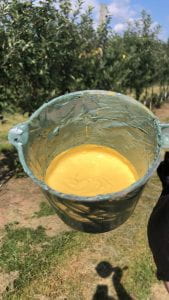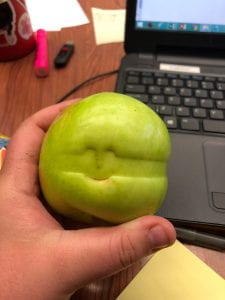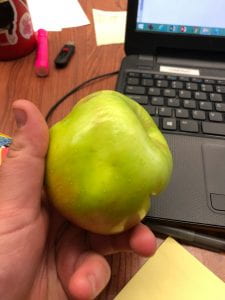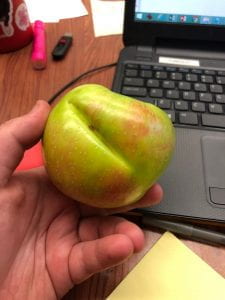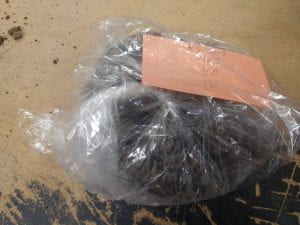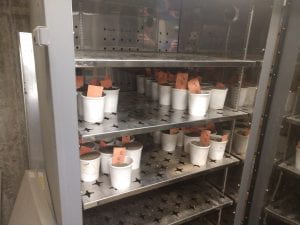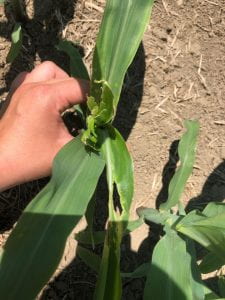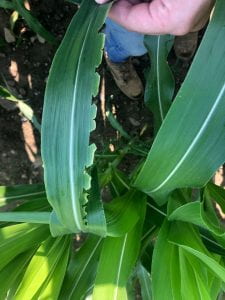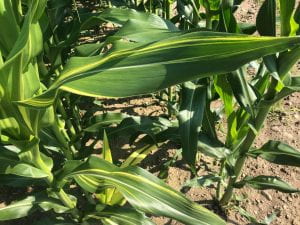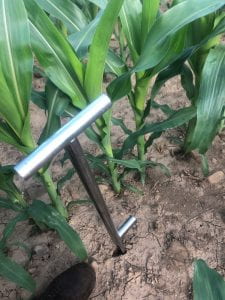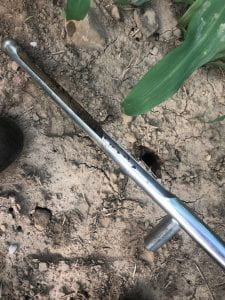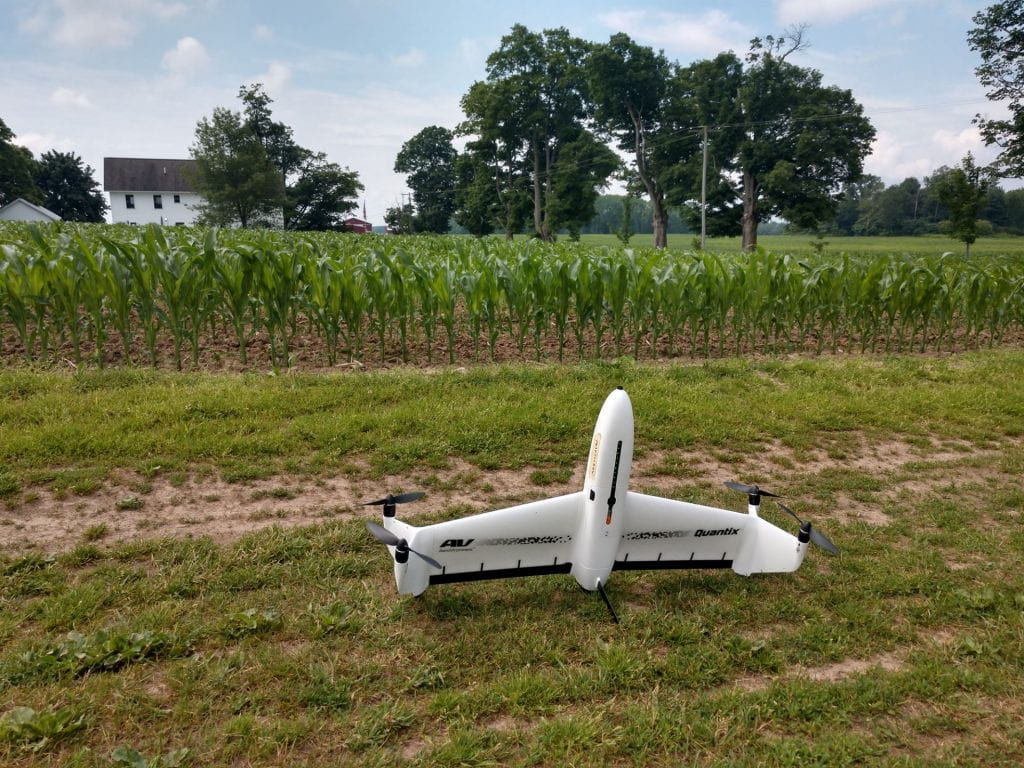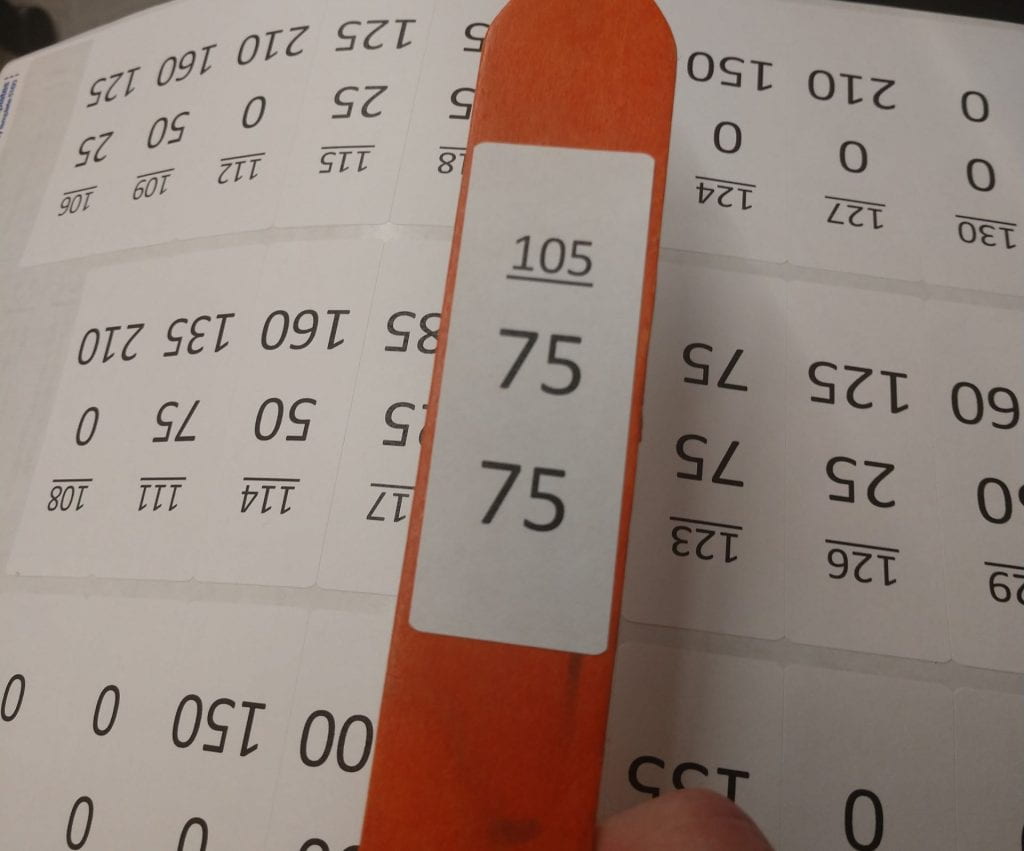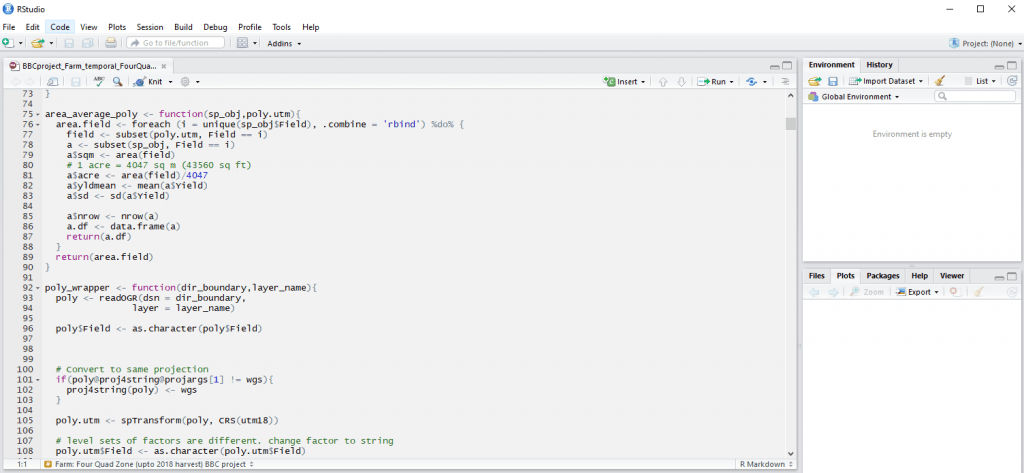Hey y’all, welcome back to the blog! This week, I wanted to take a moment and discuss/write a list of all of the odds and ends kind of jobs to keep the FREC orchards running.
1.) The first task I wanted to talk about was tree training. It was the task that I feel like we did the most of throughout different parts of the orchard. Tree training was used to keep the trees growing in the correct direction. We would use a variety of different tools to get the trees growing correctly. This usually included tree tension clips, CEP tape, a thinner red tape, electrical tape, bamboo sticks, pruners, and a lot of patience. I will include a photo below of Megan and I tree training. This was also one of my favorite tasks because you could always find cool looking bugs or birds nests with eggs (and sometimes baby birds!).
2.) The next task was a real cow and probably one of my least favorite tasks: pruning trees. This was especially awful in a large block of peaches because it felt like it would never end. The trees were five years old and had been trained into a quad-V formation, meaning they had four scaffolds tied to trellis wires. The trees needed to be pruned on both side of the row because of this type of training and because they were tall, they needed done on both the tops and the bottoms. Additionally, the trellis wire was plastic, not metal wire, so it was very easy to cut and break with your pruners. Unfortunately, I did that twice.
3.) The third task that I did was also quite painful and also in the same aforementioned block of peaches. I had to take soil samples of the different plots of trees. There were seventy five plots of five trees each and I need to get a soil sample from each tree. That’s 375 samples, 375 holes in the ground. Additionally, the soil probe is ineffective in the soil we had because it was so rocky, so I had to use a shovel. Ever since I did that, I have compared every other task we did to that one.
4.) This next task was pretty fun. I was helping work on a chemical thinning experiment and I had to take the sample apples and collect data on them. I had roughly seventy apples where I had to weigh them and take their diameter. Then, I had to cut each one open and count their viable seeds. I was given a very large knife, a very small knife, and an envelope opener to complete the task. I had fun! I have attached a picture below.
5.) One of the other fun things I got to do was paint our new baby trees! We have a new block of apples of roughly 1300 Premier Honey Crisp apples and 400 EverCrisp apples. They are painted white to protect from herbicide and sun scald. We used outdoor latex paint and painted them all in a day. In addition to this, all tenth trees are painted specific colors so when you are out there it is easier to know what tree you are on. For example, every tenth tree is yellow, but the 30th is painted red, 60th is blue, 90th is purple, and 120th is orange. Any tree that is out of the study due to illness or replacement is lime green. This was done in more than the new apple trees, but also in any block that needed it. Below is a not-so-great picture of the newly painted baby trees.
6.) The next job is repainting the graft union of top-worked treed with sealant. We have a few rows of trees that have been top-worked, meaning that they grew an apple tree normally, then decided they wanted them to be a different variety, but wanted a quick turn around. In order to do this, they cut off the tree where the scion joined the rootstock and grafted new healthy buds of a different variety there. to ensure they stay, they wrap it in grafting tape and come back later with an antibacterial sealant to ensure it stays. The sealant need reapplied about once a year, so this year Megan and I got the joy of reapplying it. The sealant had the color of Kraft mac and cheese, and an absolutely awful smell. Unfortunately technology has not advanced to allow you all to smell it, but I will post a picture of it below.
7.) Another task that we did a lot of was thinning apples and peaches. However, one experience really stuck out to me, which was thinning very large Honey Crisp apples. Because they were so large, you would pull one off to thin a cluster down from a triple to a double and all three of the apples would fall off. Pulling just one off without all of the rest coming with it was almost an art form. I did find this one apple that had seen all kinds of challenges, but still managed to grow. It had grown around the clip that held the tree to the wire, around the tree itself, and around the wire. I’ll put pictures below.
There are dozens of other tasks to keep the orchard in tip-top shape, but I won’t bore you with the details. In the next blog post, I am excited to write about some other experiments I helped with!




